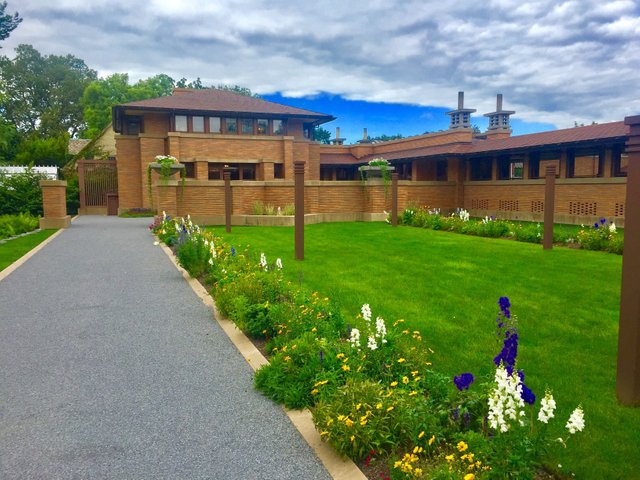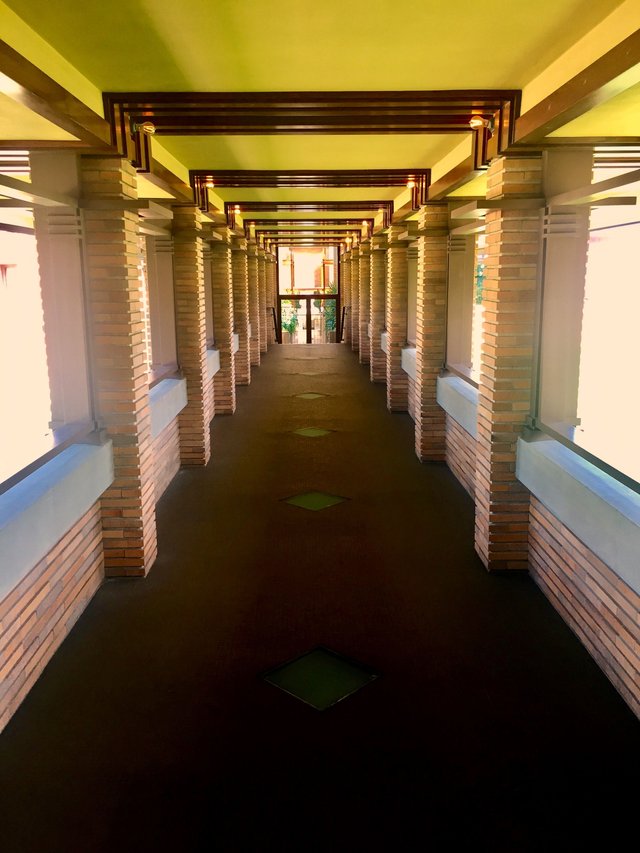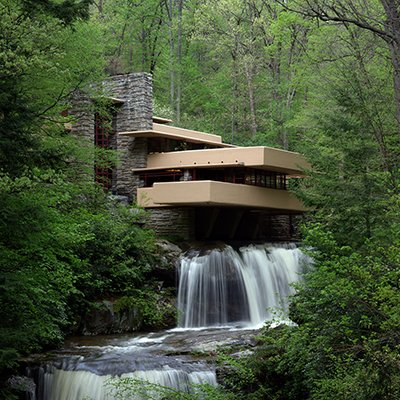The Man Who Saved Architect Frank Lloyd Wright
Frank Lloyd Wright, named America’s greatest architect by the AIA, had a career that was in frequent financial jeopardy. His ego and ambition often got ahead of his finances, even filing bankruptcy in the early 1920's. But every great artist needs his or her benefactor, and Darwin Martin of Buffalo New York was Frank Lloyd Wright’s greatest financial supporter through much of Wright’s career.

On my recent road trip vacation to New York and Canada, I had the opportunity to visit several Wright properties commissioned by Darwin Martin. In most of these properties, Martin gave Wright a desired budget, Wright gave Martin an estimate that exceeded the budget and then Wright blew the estimate sometimes many times over.
I visited the Darwin Martin complex in the Parkside neighborhood of Buffalo, a middle class neighborhood where Martin had Wright build several buildings in a complex (photo below) that I believe is second only to Wright’s Fallingwater in terms of detail and thoughtful execution of residential architecture.
Martin was a self made man, coming from a meager and somewhat tragic family life where at age 12, he set out on his own and worked selling soap for the Larkin Soap company in New York City, living in a boarding house. He was ambitious and ultimately successful enough to be moved to headquarters in Buffalo as a junior accountant. He rose quickly in the company and helped build it into the largest mail order business behind Sears and Montgomery Ward.
Darwin Martin was number two at the Larkin company at the turn of the 20th century and determined to display his wealth differently than the other upper class of Buffalo. He had heard of Frank Lloyd Wright’s work in Chicago and decided that he wanted him to build his new house in Buffalo. He and Wright’s personalities were very different, with Martin being somewhat reserved and practical and Wright known for his ego and arrogance.
Martin decided that rather than trusting Wright to design and build his house first, he would have Wright build a house for his sister Delta Barton on the property he owned in the middle class Parkside neighborhood of Buffalo. Today it is known as the Barton House (pictured below) and sits on the back corner of the property.

After the Barton House was completed, Wright was given a budget of about $30 thousand for the rest of the design, which ultimately cost Martin about $175 thousand. In 1903, that was a vast sum of money for a house.
Wright apparently had a design for the entire complex for the property in mind from the start that included the Barton House, the main residence known as the Darwin Martin House, a conservatory, a gardener’s cottage, and stables. Included in the design is a covered walkway connecting the house to the conservatory known as the pergola.
The photo below was taken inside the pergola looking down toward the conservatory.

Inside the conservatory was a statue of the winged goddess Nike, a symbol of strength, speed, and victory.
The gardener's cottage was also added to the property, but while still in the Prairie style, looks different than than other structures in the complex.
The doors on the cottage were beautiful so I've included them below for fellow Steemian @tattoodjay's #distinctivedoors theme.
With Darwin Martin being very practical for a man of the roaring twenties, it was no surprise that his fortune only fell slightly during the stock market crash of the late 1920’s, dropping from about $2.9 million to $2.6 million. Wright, as you might imagine, didn't fare so well. He had spent much of the money he made on the Imperial Hotel in Tokyo on amassing a large collection of Japanese prints and artwork and was quickly bankrupt when the market turned down. It is said that Martin sent his man secretly to a bank auction of Wright’s assets, to acquire them if there were other bidders. No other bidders showed up and Martin’s man was told not to bid, but to let the assets fall to the bank. Martin went a few weeks later to offer the bank cents on the dollar for the artworks and other assets. He supposedly gave them back to Wright for his use, but retained ownership so that Wright could not sell them or lose them in any future bankruptcies.
Throughout Wright’s career Martin sought out commissions for Wright’s designs, including the corporate headquarters for the Larkin Company. Don't go to Buffalo expecting to see that building, the city allowed it to be torn down and all that is left is a portion of a wall. It was apparently one of Wright’s most impressive pieces of commercial architecture and the city has regretted its demolition. When Martin approached retirement, he gave one last commission for a summer home along Lake Ontario named Greycliff, but that is for a future post.
The information in this post was gleaned from reading and listening to numerous tour guides put their unique perspective on Darwin Martin's legacy. I can't guarantee every story is perfectly accurate, because each guide had a slightly different version of the events. From my personal visit, I came away with a good sense for the relationship between these two very different men and how each benefitted from the relationship.
!steemitworldmap 42.36073 lat -78.847835 long Darwin Martin House D3SCR
the gardeners cottage is an amazing place
thx for sharing
You're welcome.
Congratz, you just have been resteemed by @pixresteemer!
(All right but who is pixresteemer?)
BTW: Thanks for the gift! Very appreciated and will be converted to SP...
Thank you!
Beautiful. There is a home here in Newfoundland which was designed by a student of FLW. This house is beautiful, but over the years it has become rundown. Appartments have been built near it and it has lost its shine for sure. It is on the market now for a steal :( Oh my
Thanks for sharing.
Following
The Darwin Martin house was abandoned at one point and one tour guide said someone was selling salvaged stained glass windows out of a wheelbarrow. Much of it was rebuilt for a cost so far of over $50 million. These houses are beautiful, but famously expensive to restore and maintain. Hopefully the one near you will find someone with money who appreciates it. Without FLW as the original architect, it is probably not a good bet. Thanks for reading and commenting.
My pleasure. Keep up the great work.
Cheers my friend
This is my favourite Webber house:

It's called Falling Water (I'm sure you are aware of this😉) and was built in Mill Run, Pensylvania. @originalworks
I have visited Fallingwater a couple of times. It is a beautiful property. Thanks for your comment.
That's awesome! I just know from my college days, studying architecture. Never been in the neighbourhood so never had a chance to visit.
What amazing photos and info! We have Taliesin fairly near, and I love it so much. Thanks SO much for posting this.
I hope someday to visit Taliesin. I'm glad you enjoyed the post!
Come by and see me if you cone to Wisconsin!
👍
Have you read the novel Loving Frank? I enjoyed it so much.
My wife has, but I've never gotten around to reading it.
Great article on an amazing person. Trying to save up for this house but still got a long way to go.. hehe http://www.startribune.com/frank-lloyd-wright-house-in-st-louis-park-on-the-market/382791431/#1
That looks amazing. Maybe when Steem gets to $5000. 😊
Cool story bro, no really. A Benefactor series would be sweet.
Thanks!
Thanks for sharing.. a very interesting history. You are right those doors are beautiful!
Have upvoted and following along for more of your interesting posts
thanks
Thanks. I appreciate your support!
Your Post Has Been Added To The Steemit World Map!
Go Check It Out At: http://SteemitWorldMap.com